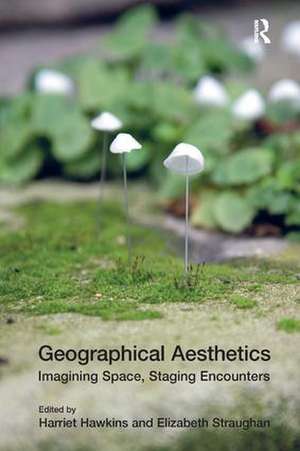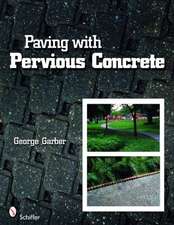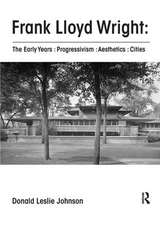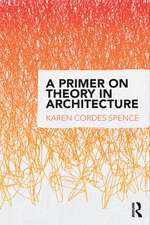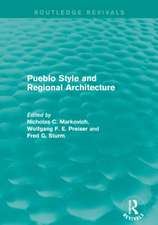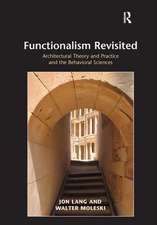Geographical Aesthetics: Imagining Space, Staging Encounters
Autor Elizabeth Straughan Editat de Harriet Hawkinsen Limba Engleză Paperback – 5 feb 2018
| Toate formatele și edițiile | Preț | Express |
|---|---|---|
| Paperback (1) | 325.34 lei 6-8 săpt. | |
| Taylor & Francis – 5 feb 2018 | 325.34 lei 6-8 săpt. | |
| Hardback (1) | 1009.74 lei 6-8 săpt. | |
| Taylor & Francis – 28 mar 2015 | 1009.74 lei 6-8 săpt. |
Preț: 325.34 lei
Preț vechi: 379.25 lei
-14% Nou
Puncte Express: 488
Preț estimativ în valută:
62.26€ • 67.61$ • 52.30£
62.26€ • 67.61$ • 52.30£
Carte tipărită la comandă
Livrare economică 22 aprilie-06 mai
Preluare comenzi: 021 569.72.76
Specificații
ISBN-13: 9781138546929
ISBN-10: 1138546925
Pagini: 320
Dimensiuni: 156 x 234 x 22 mm
Greutate: 0.45 kg
Ediția:1
Editura: Taylor & Francis
Colecția Routledge
Locul publicării:Oxford, United Kingdom
ISBN-10: 1138546925
Pagini: 320
Dimensiuni: 156 x 234 x 22 mm
Greutate: 0.45 kg
Ediția:1
Editura: Taylor & Francis
Colecția Routledge
Locul publicării:Oxford, United Kingdom
Cuprins
Contents: Preface; Introduction: for geographical aesthetics, Harriet Hawkins and Elizabeth Straughan. Section 1 Towards a Lively Aesthetics: On aisthA*sis, 'inner touch' and the aesthetics of the moving body, Mark Paterson; Anime cosplay as love-sublimation, Paul Kingsbury; Activist pedagogies through Ranciere's aesthetic lens, Naomi Millner; Relational urban interventions, Ashley Dawkins and Alex Loftus. Section 2 Aesthetic Encounters: Comforting others: sociality and the ethical aesthetics of being-together, Danny McNally; The artifice of landscape: photomontage in the work of Beate GA tschow, Alex Vasudevan; Biostratigraphy and disability art: an introduction to the work of Jon Adams, Hannah Macpherson (with Jon Adams); Death drive: final tracings, James Riding; Aesthetic regard for nature in environmental and land art, Emily Brady. Section 3 Tissues and Textures: Reimagining the Surficial: The mantle of the Earth: surfaces, landscape and aesthetics, Veronica della Dora; Thinking with/as a frog: art, science and the performative image, Deborah Dixon; The contested aesthetics of farmed animals: visual and genetic views of the body, Lewis Holloway and Carol Morris; Conclusion: reimagining geoaesthetics, Harriet Hawkins and Elizabeth Straughan. Index.
Notă biografică
Harriet Hawkins is a Senior Lecturer in Historical and Cultural Geography at Royal Holloway University of London, UK and Elizabeth Straughan is an Honorary Research Associate in Geography at the University of Glasgow, UK.
Recenzii
’Geographical Aesthetics burns and blisters. A startling collection of essays centered on aesthetics and space, the book ignites, showering sparks and little fires of provocation for a more lively aesthetics to take hold. The essays are historically aware and politically attuned, indeed, the book is a thorough treatment of the historical and political, a distribution of space, time and politics in encounters, engagements, movements and creative practices. The chapters engage a variety of topics ranging from cosplay to border activism; landscape art; disability; geologies; science; and agriculture. In this, Hawkins and Straughan have expertly brought together fascinating interrogations of the tissues, textures, tendrils, surfaces, depths, volumes and atmospheres of the imagination, creative expression, and the sensible.’ Peter Adey, Royal Holloway University of London, UK ’This carefully-crafted work interrogates how aesthetics is politicized, spatialized, thought, and felt. Seamlessly, synthetically, Hawkins, Straughan and colleagues critically and creatively analyse elements of the aesthetic in geographical encounters that reinvigorate a geography of surfaces. The effect is to demonstrate the importance and utility of a richly geo-aesthetic understanding of the world.’ Elaine Stratford, University of Tasmania, Australia
Descriere
Bringing together timely commentaries by international, interdisciplinary scholars, Geographical Aesthetics is the first volume to make questions of geographical aesthetics a substantive concern. It reworks the historical relations between geography and aesthetics, and reconsiders how it is we might understand aesthetics. It then reaffirms the value of aesthetics in relation to key intellectual concerns within Geography and explores the geographies of the aesthetic, in particular the spatialities and imaginaries that mark its theorisations. In renewing aesthetics as a site of investigation, but also an analytic object through which we can think about the encounters, the meetings and minglings of the world, what also emerges is powerful reworking of our geographical imaginary of the aesthetic.
